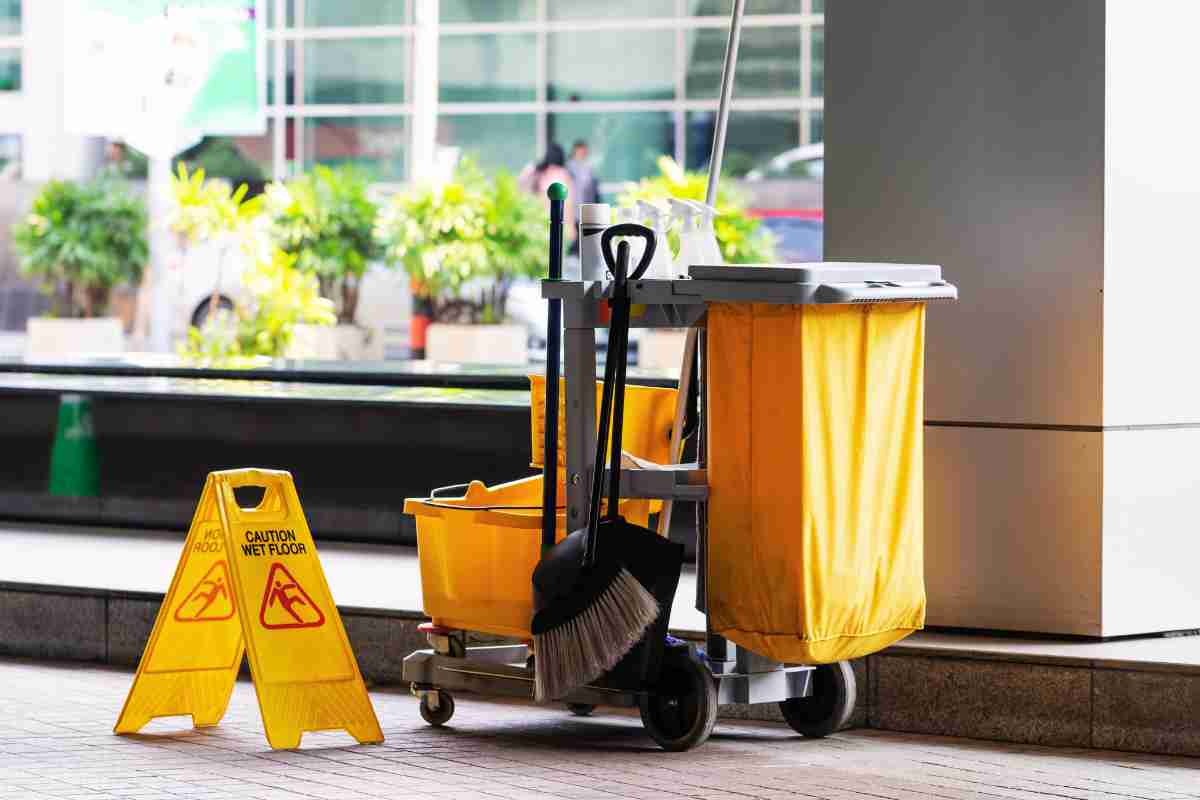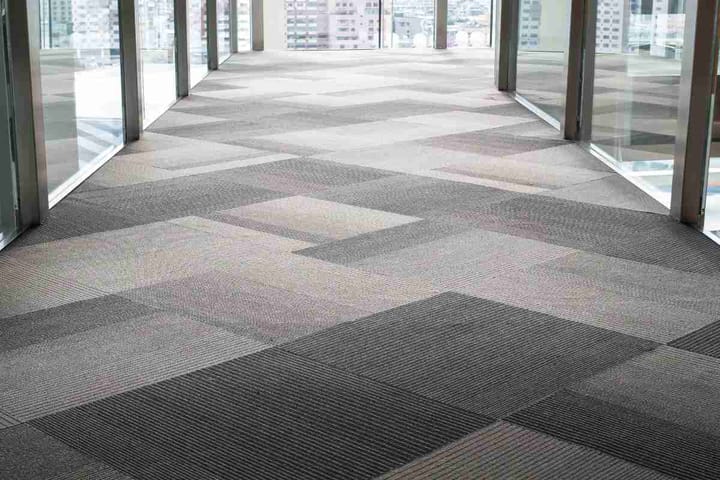Common Office Cleaning Mistakes and How to Avoid Them
A clean office boosts image, productivity & health. Avoid common cleaning mistakes to maintain a spotless, efficient workspace. Here’s how.

Office cleanliness says a lot about the organization and the administrators and owners behind it. When an office is clean, it reflects positively on the business and its employees. It’s like a badge of achievement for a business to have a clean workspace environment where employees work comfortably, productively, and healthily.
Yet, as businesses might try to maintain this idyllic office environment, cleaning efforts can take a tumble due to mistakes. Before your office cleaning turns counterproductive and disastrous, we’ll share a few tips to avoid common office cleaning mistakes.
Disregarding High-Touch Areas
Failing to notice office spots that frequently get touched or handled is a frequent oversight in office cleaning. The professionally trained Regional cleaners emphasize that high-touch areas such as door handles, light switches, and shared equipment like printers and phones should be prioritized for sanitation and disinfection. Office pantries, kitchens, and toilets have plenty of high-touch areas as well, prompting the need for deep cleaning as they harbor germs and pathogens.
Regular disinfection creates a healthy workspace and inspires employees to practice hygienic work routines to promote a culture of cleanliness. If in-house cleaning staff can’t consistently disinfect these areas, hiring professional office cleaners can help ensure a deep and thorough clean of these high-contact points and minimize the spread of illnesses.
Using Incorrect Cleaning Products
A common misconception is that home and office cleaning products can be used interchangeably. Offices have various sensitive equipment and surfaces that need specially made cleaning products. Using the wrong cleaning products does more harm than good because it isn’t only ineffective but can also damage furniture or equipment. For example, highly reactive or corrosive industrial cleaners may damage sensitive office equipment such as computers and printers. In hospitals, laboratories, and other healthcare settings, cleaners with high antibacterial properties are needed, while in warehouses, a general-purpose cleaner will suffice.
Abrasive cleaners are ideal for industrial settings but in offices with polished surfaces like wood and glass, they’ll scratch instead of clean. Likewise, harsh chemicals shouldn’t be used in offices to avoid damaging furniture and creating toxic fumes. Selecting the appropriate product for typical office surfaces is warranted and manufacturer guidelines on proper cleaner usage must be followed for an effective clean.
Overlooking Floors
It can be easy to take floors for granted just because it receives near-endless foot traffic. It should be the opposite: floors should be prioritized because they are prone to accumulating dirt, dust, and spills that are breeding grounds for bacteria.
Regular mopping or vacuuming is essential in preventing dirt accumulation. The cleaning approach should also be tailored to the surface type. Carpets require a different cleaning technique than hard surfaces and professional cleaners can ensure that whatever your office floor is, it receives a deep clean.
Neglecting the Kitchen and Break Areas
Aside from being included in high-touch areas earlier, there’s another reason why kitchen and break areas should not be ignored when cleaning the office – food and drinks. Food remnants and drink spills are common in these areas, and these are not just unsightly but can cause unpleasant odors as well. Failing to thoroughly clean these areas can also attract pests such as cockroaches and mice, which can spell disaster for the office environment.
A comprehensive cleaning checklist needs to be implemented for kitchens, break areas, and other communal locations to keep them in prime condition. Encourage your team to clean up after themselves by placing CLAYGO (clean as you go) reminders in these areas. Deep cleaning sessions are also scheduled to ensure no unseen issues such as mold in refrigerators or buildup in microwaves are left unaddressed.
No Strategic Dusting Approach
Dust can accumulate anywhere, no matter what floor your office is located. Dust is not only unsightly but is also a culprit of poor air quality in workplaces. It gathers on furniture, equipment, and surfaces, causing skin irritation and allergies. Most if not all cleaning routines include dusting, but only a few incorporate a systematic dusting strategy.
Dusting must be performed from top to bottom, starting at the ceiling and ending with floor vacuuming. A dedicated dusting schedule, including the use of microfiber cloths for effectiveness, can improve air quality and create a visually pleasant office environment. Train staff and employees to elevate their cleaning practices to include heights where dust often collects, such as ceiling fans and shelves.
Failing to Communicate Cleaning Protocols
What managers and owners often fail to take into account is that communication is vital in the implementation of cleaning practices. When employees know what they should do and not do can make cleaning protocols more effective. Leaving them to their own devices can make cleaning efforts uncoordinated, inconsistent, and ineffective.
Proper information dissemination, announcements, and meetings are ways of establishing clear communication to properly implement cleaning protocols and avoid or mitigate misunderstandings. Changes in cleaning schedules and policies must immediately be announced and discussed in meetings and internal communications to ensure alignment. Open lines of communication promote accountability and collective effort in the workplace, so make it a point to let everyone know about your office cleanliness goals.
Not Letting Professionals Handle Deep Cleans
Day-to-day cleaning can keep the office looking pleasing but it’s often only at the surface level. Deeper cleaning tasks are needed to prevent early deterioration or discoloration of surfaces, furniture, and equipment.
Hiring professionals can help address more complex issues such as carpet cleaning, window washing, and air duct maintenance. Specialized equipment is needed for these tasks, and these trained professionals can handle them effectively. Regular scheduling of deep cleaning helps maintain a hygienic office environment and prolongs the life of office materials.
Skimping on Cleaning Supplies
The quality of cleaning supplies affects the effectiveness and longevity of the cleaning approach. Cheap cleaning supplies may save money, but may not deliver long-term results. Some may wear out quickly, while others may clean lightly, leading to quick cleaning supply exhaustion. Think of supplies as small investments in office health and aesthetics, where high-quality supplies can result in a healthy, clean, and pleasing workplace.
Image Source: https://www.freepik.com/free-photo/professional-cleaning-service-person-cleaning-office_48048802.htm
It takes awareness of these common pitfalls to know where your office stands with its cleaning practices. There is the possibility that the cleaning we do in our office is wrong all along, and that knowledge can help us correct it. It’s also unwise to continue with incorrect cleaning practices as they can impact the health, comfort, and productivity of employees. Addressing these issues isn’t hard. All that’s needed are well-planned strategies, and that will lead to a more inspiring and stress-free work atmosphere. So make the pepper approach to cleaning and get rewarded with high productivity and employee satisfaction.


Comments ()